- Home
- Neal Stephenson
The Rise and Fall of D.O.D.O.: A Novel Page 37
The Rise and Fall of D.O.D.O.: A Novel Read online
Page 37
American English: 5
German: 4
French, Spanish: 3
NOTE: As part of preparation for kalonji DEDE, underwent immersive training in medieval Hebrew (fluency rating 1.5), Byzantine Greek (2), and medieval Dutch (2).
RELIGION: Non-observant Lutheran
CITIZENSHIP: American
BIOGRAPHY: Raised in middle-class home in CT, father owned auto shop, mother a nurse, formerly for Médecins Sans Frontières. Dyslexic. Majored in PhysEd at UConn, emphasis on cross-country and wilderness survival skills. Former USA Olympic track & field team, took bronze in Marathon. Worked at Outward Bound, involved in various “extreme sports” activities including cliff jumping, rock climbing, Parkour.
RECRUITMENT: Personal contact by LTC Tristan Lyons, whom he met while leading a rock-climbing expedition (Lyons 14 at the time). They became friends, and continued to engage in wilderness-oriented athletic activities together.
SKILL SET: Extremely fit, hardy, capable of functioning under punishing physical circumstances (natural or man-made). Physically nondescript enough to “blend into crowd” in most Caucasian populations. Decent MacGyver-like capabilities. Loyalty unshakable.
LIMITATIONS: Dyslexic, not comfortable in conversationally dependent situations. More comfortable in rural than urban/suburban surroundings.
Post by Mortimer Shore on
“General” ODIN channel
DAY 622
Hey all,
In the wake of yesterday’s incident in the cafeteria line, Macy Stoll has asked me to post a few safety tips that y’all should keep in mind until such time as we can print up posters, establish training programs, etc.
Just as background, the requirement for Fighter-class Diachronic Operatives (DOers) to achieve and maintain proficiency in various historical martial arts styles entails wearing, transporting, storing, and using a wide range of historical weapons and weapon simulators on premises. No single, blanket policy can cover all such cases, but here are some general rules:
- Scabbards are trip hazards! Glance down before stepping behind a swordfighter.
- Assume all blades are razor sharp.
- If you see something falling out of a scabbard, don’t try to catch it.
DODO WHITE PAPER
UDET: OR, DIACHRONIC MISSION DURATION
BY REBECCA EAST-ODA
Submitted to ODIN archive, Day 622
The recent influx of funding and new personnel has led DODO staff to look more deeply into certain aspects of how diachronic operations are conducted that hitherto we had just taken for granted. In particular, the need to schedule complex missions, such as the upcoming kalonji-related DEDEs, has forced us to think in greater detail about the duration of missions and how many can be scheduled in a given span of time.
Most of DODO’s experience has centered on the colonial Boston and Elizabethan London DEDEs conducted last year by Dr. Stokes and LTC Lyons respectively. Both of these were of relatively brief duration. Dr. Stokes was able to accomplish her tasks in the course of a single day. With the exception of the first repetition, LTC Lyons’s DEDE was a “sleepover” in which he had to spend one night at the DTAP. In all of these cases, the responsible witches (KCWs Karpathy, Fitch, and Gráinne) acted in a way that preserved “Unity of DOer-Experienced Time,” hereinafter UDET. The idea of UDET is simple and can be quickly explained: if Dr. Stokes experienced eight hours of elapsed time during her mission in colonial Boston, then the same span of time separated her being Sent by Karpathy from the ODEC to the DTAP and her reappearance in the ODEC upon being returned home by KCW Fitch. Likewise, when LTC Lyons spent approximately twenty-four hours in the 1601 London DTAP, the same amount of elapsed time occurred between his being Sent there and his being “Homed” by KCW Gráinne. UDET means that from the point of view of the DOer as well as observers in the facility, it is as if the DOer walked through a door into another room, spent eight or twenty-four hours there, and then walked back through the same door.
This does not pose a serious inconvenience for short missions. By contrast, however, the nature of the kalonji DEDE is such that it cannot be accomplished in less than approximately two months. For those unfamiliar with the premise of this DEDE, a short explanation follows: we are attempting to recruit Winnifred Dutton, a potential KCW in Antwerp circa 1560. The only way we have found to motivate her is by supplying her with samples of an herb called kalonji, which is rare and nearly unobtainable in her time and place. We have found a source for kalonji seeds in Constantinople circa 1200, which is a DTAP of interest to us anyway. The current plan of record is to send one DOer to 1200 Constantinople to obtain the seeds. She will then hand them off to a wilderness survival expert (Strider class) who will carry them overland to Belgium and sow them in a known location where we think that they will thrive. It should then be possible to visit that location circa 1560 and harvest the herb in the wild. The plan’s primary drawback is that the overland journey from Constantinople to Belgium is projected to take two months, and it will have to be repeated on at least three Strands in order for it to “take.” Our Strider will therefore have to experience a total of at least six months of (our) elapsed time in that DTAP.
If the mission is performed in a way that preserves UDET, then the Strider will indeed be absent for a total of six months.
If, on the other hand, we can arrange for the Strider to be “Homed” from 1200 Belgium only a few minutes after he is Sent to 1200 Constantinople, then the entire series of missions could be conducted in less than a day, as time is perceived by those of us here in modern-day Boston. The Strider would still be six months older at the end of it, and would have six months’ worth of memories from his journeys, but the clock, as far as DODO is concerned, would only have advanced a few hours.
The latter procedure is obviously a more efficient use of time as far as DODO is concerned. Moreover, to the extent DODO is engaged in a competition versus the diachronic operations agencies of foreign powers, we must assume that our adversaries are making use of such optimization wherever possible and are getting their jobs done that much more quickly.
This is a topic that has been on several people’s minds for some months now and that has been brought to the front burner, as it were, by the kalonji DEDE planning process. Initial attempts to raise the question with KCW Erszebet Karpathy proved unavailing, as the very idea of it made very little sense to her and could seemingly gain no purchase on her mind; she could not make heads or tails of what it was that we were asking her to do, much less express an opinion on it, and repeatedly accused us of being de-mented or insane. As the overall emotional tone was becoming counterproductive, I was asked to work with her on the topic, since I have known her for longer than most DODO employees, and she trusts me on the basis of the belief that I am descended from witches and that I have some latent magical ability. The results of my inquiry are detailed below. A top-level summary is that DEDE time compression does not appear to be a practical option, largely because witches have great difficulty even understanding the idea, and consider it to be reckless, far-fetched, and childish. The best analogy I can think of is how a modern physicist would react if you approached him and proposed to travel at greater than the speed of light. Mixed with this is a little bit of how Chopin would react if you proposed to play a piano by striking it with a sledgehammer.
Detailed Analysis
Witches’ objections to DEDE time compression (to the extent they can even fathom the idea) can apparently be broken down into two general categories: one, the asymmetry between Sending and Homing a time traveler, and two, the risk of something akin to present-day Diachronic Shear.
1. SENDING/HOMING ASYMMETRY:
Non-witches are apt to think of “Sending” (moving a DOer from an ODEC back in time to a DTAP) and “Homing” (the reverse process) as the same thing, but it turns out that from the witch’s point of view they are entirely different spells. The contrasts are explained in the following table.
SENDING
HOMING
Back in time
Forward in time
Once Sent to the past, the DOer can take actions that might affect the present-day reality of the Sending witch, the DOer him/herself, etc.
Once Homed back to the present day, the DOer’s actions cannot affect the past reality of the Homing witch, etc.
The DTAP is terra incognita to both the Sending witch and the DOer, must be extensively researched beforehand from historical documents, maps, and scrying.
The destination is perfectly familiar to the DOer but unknown, and nearly unimaginable, to the Homing witch, for whom it is in the distant future.
The DOer is moving from their natural time and place to one where they are an unnatural intrusion.
The DOer is moving from a place where they fundamentally do not belong, back to their natural time and place.
For these reasons, witches think of Sending and Homing as asymmetrical, and fundamentally different, spells. Sending is much more difficult, first of all because it entails more advance prep work if it is not to produce a random result, and secondly because it means working against the natural flow of time.
An analogy might be made to a rubber band connecting the DOer to their natural time and place. When the DOer is Sent to a past DTAP, the rubber band is stretched, which requires more effort and more focus on the witch’s part if the DOer is not to end up in the wrong place. When the same DOer is Homed, it is as if their connection to the DTAP is simply severed by the Homing witch. The “rubber band” yanks the DOer unerringly back to the ODEC from which they were Sent. Indeed, if this were not the case, diachronic operations would not be possible at all. In the case of Dr. Stokes’s colonial Boston DEDE, how could KCW Fitch possibly have returned Dr. Stokes to the ODEC in modern-day Boston—a time, place, and environment beyond her imagining—if not for this “snap-back” effect?
The “rubber band” feature of Homing is therefore fundamental to DODO’s ability to do anything at all. But there is a catch: if the DOer has experienced eight hours, or seventeen days, in the DTAP, the “rubber band” yanks them back to the ODEC eight hours or seventeen days after they departed.
Compressing mission time by returning the DOer to an earlier moment is, therefore, not simply a matter of using the Homing spell in a different way—turning the knobs to different settings, as it were. It would require a different spell altogether. And the witch performing it would have to have some prior familiarity with the future DTAP in order to “aim” the DOer in the correct “direction.”
2. SHEAR RISK:
Witches appear to have a nose for situations apt to produce Diachronic Shear. Mission duration compression seems to be one of those. If a homebound DOer can be Homed back to the “wrong” time (i.e., earlier than the natural snap-back time) then they could just as well be sent home before they departed, which would lead to a situation in which two copies of the same DOer were existing in the same time and place.
Other absurd or paradoxical situations could be imagined. Let us say that a twenty-year-old DOer were Sent back to a DTAP where they lived for sixty years, then Homed to a point in time only a fraction of a second after their departure. From the point of view of an observer in the ODEC, it would be as if the twenty-year-old were instantaneously replaced by an eighty-year-old.
Such possibilities are deeply distressing to witches, who seem to see in them a kind of moral and aesthetic abomination.
To sum up, it appears that the idea of compressing mission duration is a non-starter. From the witches’ point of view, it requires getting a compliant witch in the distant past to undertake an unfamiliar spell of extreme difficulty, all to achieve an end result that is viewed as both insanely risky and viscerally repugnant.
We are, therefore, stuck with UDET for the foreseeable future, and it seems safe to say that our adversaries are in the same boat. DODO personnel planning the kalonji seed DEDE, or other time-consuming missions, will have to take that reality into account. Fortunately, we have the luxury of time at the moment since we are awaiting the completion of the Chronotron.
DODO MEMORANDUM
POLICY ON OFFICIAL JARGON AND ACRONYM COINAGE
BY MACY STOLL, MBA
POSTED Day 623
Now that I’ve had time to settle in to my new role as head of C/COD (that is DODO’s Conventional/Contemporary Operations Department, for those of you who have been tucked away in exotic DTAPs during the recent organizational upgrades), I’m beginning to see opportunities for optimizing and perfecting the way DODO operates on a day-to-day basis. In coming weeks we’re going to be challenging ourselves to implement new procedures and policies that will help ensure that the taxpayers get the most for their hard-earned dollars, even though hopefully none of them will ever know of DODO’s existence.
Communications becomes all-important in a large organization. Informal practices that worked well when it was just a few friends sitting around a table at the Apostolic Café may no longer be well adapted to a large agency that spans not only the globe, but most of recorded history as well.
In that spirit I would like to take up the subject of jargon and acronyms.
Now, before any of you old DODO hands beats me to it, I’ll stipulate that jargon and acronyms are a staple of many large modern organizations, especially in the military and intelligence sectors, where documents sometimes look like a bowl of alphabet soup. I know that perfectly well from my twenty years of experience in such environments.
Even so, I was taken aback when I first came to the Department of Diachronic Operations and began to experience a whole new world of exotic terminology and funny strings of letters. Diachronic Shear, Strands, ODECs, QUIPUs, DOers, and more! Now, some of these I think are clear and good terms to use, such as DOer, which is self-explanatory, and DEDE, which I now understand is just an alternate spelling of “deed.” But in some cases I do sort of get the idea that a very clever person, perhaps someone from an advanced academic background where wordplay is a kind of sport, is trying to have a teeny little joke at my expense. And maybe also trying to poke fun, in a sly way, at the military world that has brought us so many brave defenders of our freedoms such as LTC Lyons and the late General Schneider. For example, lately we have begun to see DORC for Diachronic Operative Resource Center and DOOSH for Diachronic Operative Occupational Safety and Health. Perhaps those of you who have been putting so much of your creative energies into dreaming up these hilarious acronyms might consider putting yourselves into the shoes of Dr. Blevins when he has to give a tour of the facility to a senator or a general, or a foreign visitor from one of our allies, and finds himself having to explain why such terms are stenciled on doors and bandied about on official letterhead. It certainly doesn’t send the message that all the brainpower we’ve gathered together under this roof is being applied in the most productive manner, does it?
To impose a little order on all of this creative chaos, and to ensure that none of the taxpayers’ money is wasted as the result of inefficient communications, I’m putting into place a new Policy on Official Jargon and Acronym Coinage. You’ll find full details and procedures in the attached PowerPoint deck, which I encourage you all to peruse at your leisure. Existing acronyms, where widely adopted, can of course be “grandfathered in,” but those of you seeking to add new terms to DODO’s specialized lexicon will need to abide by the procedures spelled out in the deck.
Exchange of posts between Dr. Melisande Stokes
and LTC Tristan Lyons on private ODIN channel
AFTERNOON AND EVENING, DAY 623
Post from Dr. Stokes:
Re: POOJAC (Policy on Official Jargon etc. . . .)
Tristan—do you want to break the news to her, or should I?
Reply from LTC Lyons:
Stokes, I know. Everyone’s talking about it. Shut up. The first one who calls it POOJAC to her face is going to come off either as a malcontent or a snitch. If it’s the former, you’re going to end up on a PEP.
>
From Dr. Stokes:
PEP?
From LTC Lyons:
Try to keep up, Stokes. PEP = Performance Enhancement Plan. It’s what you get assigned to when you are in trouble.
From Dr. Stokes:
First I’ve heard of it. Has “PEP” gone through POOJAC?
From LTC Lyons:
What you’re not getting is that THIS IS ALL PUBLIC. It doesn’t matter how secure the Shiny Hat operating system is, Stokes, when the subpoena comes through from the Inspector General, all of what you’re writing ends up in public.
From Dr. Stokes:
Just making an observation.
Post by Macy Stoll, Head of C/COD,
on “General” ODIN channel
DAY 623
All, there seems to be some confusion brewing in the wake of my memorandum concerning the Policy on Official Jargon and Acronym Coinage. While I am aware that the letters spell out POOJAC (a nonsense word—don’t waste your time Googling it!), this is not an approved substitute for the full name of the aforementioned Policy. Remember, the entire point of the Policy is to establish an approved procedure for coining new terminology, and so to refer to the Policy as POOJAC is in and of itself a violation of the Policy.
You can easily spell out the full name of the Policy, or copy-paste if you are in that much of a hurry.

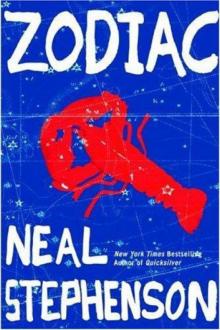 Zodiac: The Eco-Thriller
Zodiac: The Eco-Thriller The Mongoliad: Book One
The Mongoliad: Book One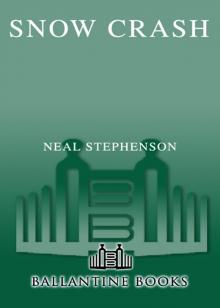 Snow Crash
Snow Crash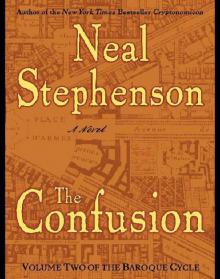 The Confusion: Volume Two of the Baroque Cycle
The Confusion: Volume Two of the Baroque Cycle The Rise and Fall of D.O.D.O.
The Rise and Fall of D.O.D.O. The Diamond Age: Or, a Young Lady's Illustrated Primer
The Diamond Age: Or, a Young Lady's Illustrated Primer The Big U
The Big U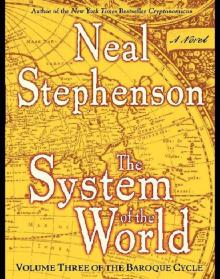 The System of the World: Volume Three of the Baroque Cycle
The System of the World: Volume Three of the Baroque Cycle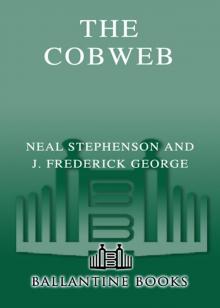 The Cobweb
The Cobweb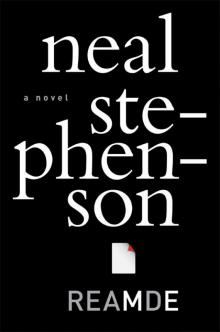 Reamde
Reamde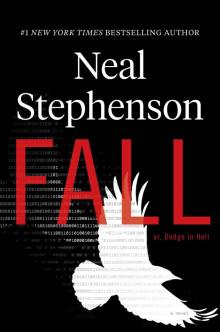 Fall; or, Dodge in Hell
Fall; or, Dodge in Hell Interface
Interface Quicksilver
Quicksilver The Mongoliad: Book Three
The Mongoliad: Book Three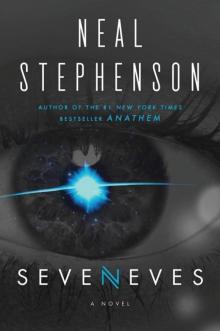 Seveneves
Seveneves Atmosphæra Incognita
Atmosphæra Incognita In the Beginning...Was the Command Line
In the Beginning...Was the Command Line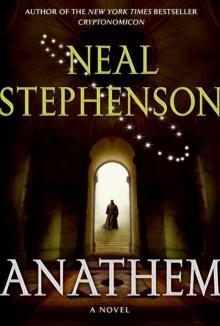 Anathem
Anathem The Rise and Fall of D.O.D.O.: A Novel
The Rise and Fall of D.O.D.O.: A Novel The Mongoliad: Book Two
The Mongoliad: Book Two Diamond Age or a Young Lady's Illustrated Primer
Diamond Age or a Young Lady's Illustrated Primer THE System OF THE WORLD
THE System OF THE WORLD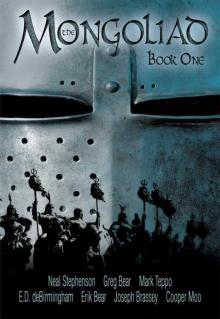 The Mongoliad: Book One tfs-1
The Mongoliad: Book One tfs-1 Some Remarks: Essays and Other Writing
Some Remarks: Essays and Other Writing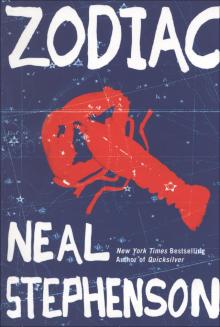 Zodiac
Zodiac Spew
Spew The Baroque Cycle: Quicksilver, the Confusion, and the System of the World
The Baroque Cycle: Quicksilver, the Confusion, and the System of the World The Diamond Age
The Diamond Age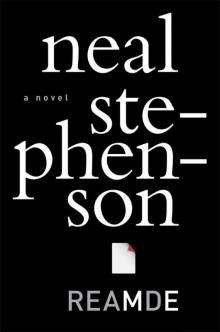 Reamde: A Novel
Reamde: A Novel In the Kingdom of Mao Bell
In the Kingdom of Mao Bell Mother Earth Mother Board
Mother Earth Mother Board Twelve Tomorrows - Visionary stories of the near future inspired by today's technologies
Twelve Tomorrows - Visionary stories of the near future inspired by today's technologies The Confusion
The Confusion The Great Simoleon Caper
The Great Simoleon Caper The Mongoliad: Book Three tfs-3
The Mongoliad: Book Three tfs-3